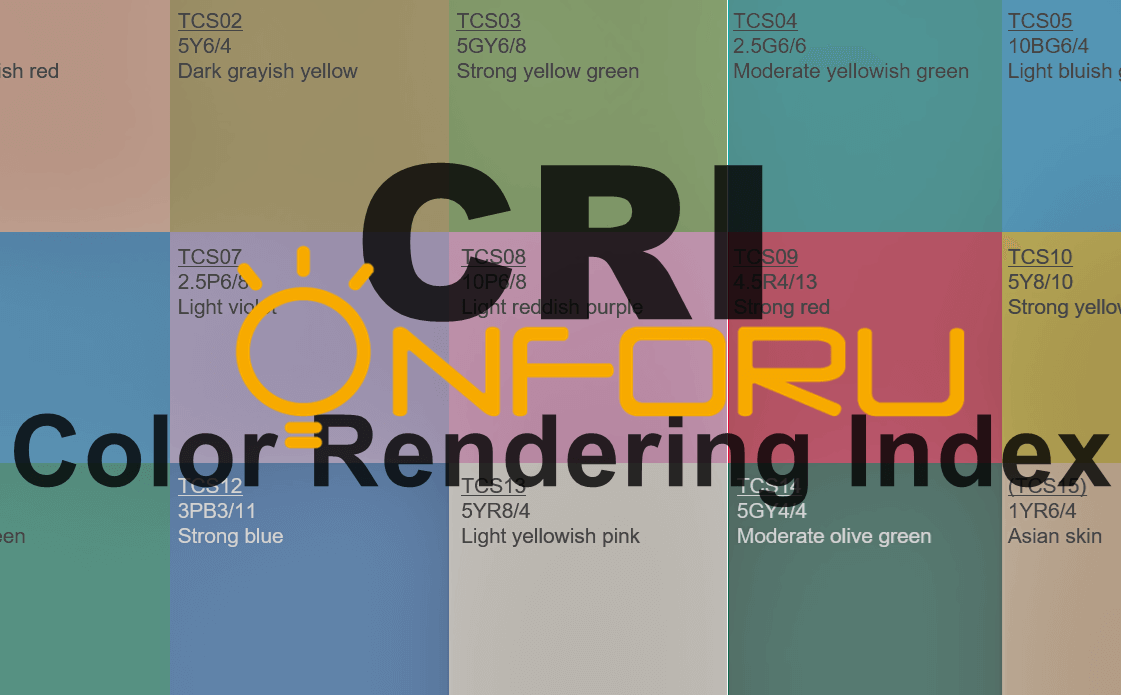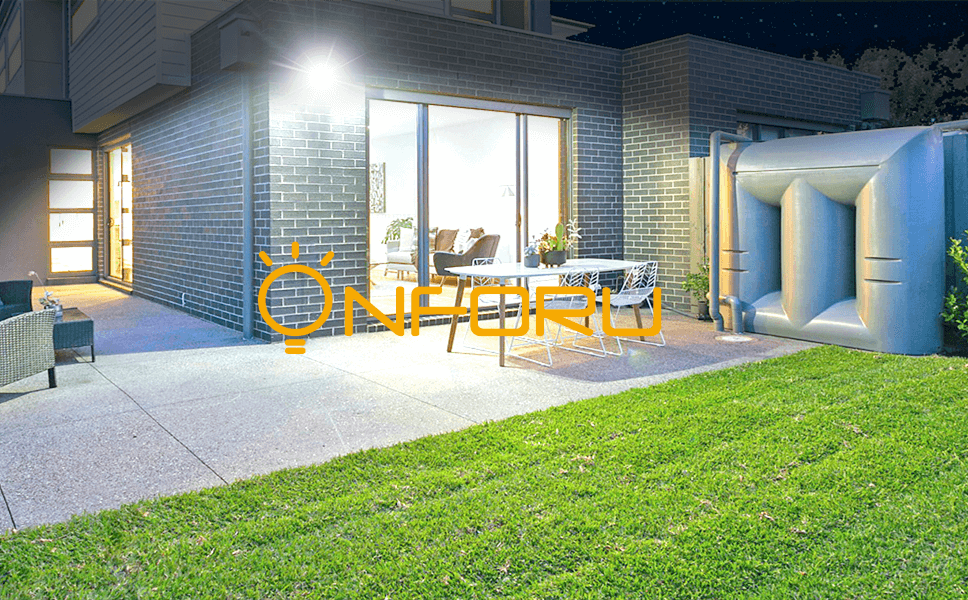What is CRI(Color Rendering Index) – Everything You Need to Know

“The color rendering ability of a light source to an object is called color rendering, and is determined by comparing the color of an object's appearance with that of a reference or reference light source of the same color temperature (incandescent light or picture light). The spectral content of the light emitted determines the light color of the light source, but the same light color can be made by many, few or even just two monochromatic light waves, the color rendering of each color is also very different. Light sources of the same light color will have different spectral compositions, the spectral composition of a broader light source is more likely to provide better color rendering quality. When the light source spectrum has little or no main wave reflected by the object in the reference light source, the color will produce a significant color shift. The greater the degree of color shift, the poorer the color rendering of the light source to the color. The color rendering index coefficient (Kaufman) is still the common method for defining the color rendering evaluation of light sources.”
In a few words, CRI (Color rendering index) is a common parameter in the field of lighting technology, refers to the object illuminated with the light source and with a standard light source (generally sunlight as a standard light source) when illumination, the degree of color compliance measure, that is, the degree of color fidelity.
What is color rendering, color rendering index (Ra/CRI)?
Intuitive understanding

The above figure is the color of the fruits in the same color temperature with different color rendering light sources, you can intuitively feel that the better the color rendering (i.e., the higher the color rendering index), the closer the color of the fruit to the real color.
In-depth analysis
Color rendering measures the extent to which the light source presents the color of the object, that is, the degree of color fidelity is a qualitative evaluation. A light source with high color rendering has better color reproduction, and the colors we see are closer to the natural primary colors (colors in the sun); a light source with low color rendering has poor color reproduction, and the colors we see deviate more.
Color Render Index (CRI) is a common method to define the color rendering of light sources, in order to quantitatively evaluate the color rendering of light sources, the color of the object under the measured light source, and the color of the object under the reference light source in line with the degree. The International Commission on Illumination (CIE) set the color rendering index of sunlight at 100, and the color rendering index of incandescent lamps is very close to daylight, so it is considered an ideal benchmark light source.
CIE provides 15 test colors / standard color samples, with 1-15 of the 15 total color numbering (number 1-8 is 8 natural colors, selected from the Menzel color scale, including a variety of representative shades, they have a medium color and brightness; number 9-15 is 7 test colors, including a high degree of the color red, yellow, green, blue, European and American young women's skin color, Chinese young women's skin color, leaf green) . With R1-R15 indicating the color rendering index of the light source on these 15 colors, respectively, 15 test colors are shown below.

The special color rendering index (Ri) is the color rendering index of the light source for a selected test color sample. Special color rendering index can be calculated using any of the color samples 1-15 as needed, but also allows the use of self-selected color samples to calculate the special color rendering index required (but must accurately determine the spectral amplitude factor of the selected color sample).
General color rendering index (Ra) is the average of the special color rendering index of the 8 colors of the light source number 1-8 (i.e., the average of R1-R8), we usually use the value to characterize the color rendering of the light source, the larger Ra, the better the color rendering of the light source.
How to choose the color rendering / color rendering index when buying light fixtures?
The choice of color rendering can usually follow two principles, the principle of faithful color rendering, the principle of effect color rendering.
Faithful color rendering principle
The principle of faithful color rendering refers to the use of high color rendering index light source in order to correctly express the original color of the object, this case line according to Ra to choose, the higher Ra on the object's original color fidelity. Different application sites require different degrees of faithful color rendering of light sources.
For the application of different sites, the International Commission on Illumination (CIE) color rendering index into five categories.
|
Color Rendering Categories |
Ra |
Color Rendering |
Scope of Application |
Examples of Applications |
|
1A |
90-100 |
Excellent |
Places where precise color contrast is required |
Color matching, color inspection, art galleries, museums |
|
1B |
80-89 |
Good |
Places where correct color judgment is required |
Factories for printing, painting, fiber and precision work; houses, hotels, restaurants |
|
2 |
60-79 |
Normal |
Places that require medium color rendering |
Mechanical power plants, control rooms, factories; offices, learning environments. |
|
3 |
40-59 |
Worse |
Places that require low color rendering |
Machine shop, foundry-type heavy industry factory, outdoor street |
|
4 |
20-39 |
Worst |
Places with no specific requirements for color rendering |
Warehouse, erection of metal storage, outdoor roads |
Effect color rendering principle
Effect color rendering principle, refers to the meat products window and other special scenes, in order to distinctly emphasize the specific color, the performance of the beauty of life and choose a specific color rendering index, in this case, usually to ensure that Ra to meet the requirements of the premise, according to the color of the object to be illuminated to improve the corresponding special color rendering index.
- For supermarkets and stores of meat products window lighting source, R9 color rendering index is particularly important, for meat is usually reddish, high R9 can make meat looks more fresh and delicious.
- For the studio, photo studio and other occasions that need to reproduce the skin color, the lighting source R15 index must not be low.
Light color rendering index (Ra) of common light fixtures
|
Incandescent lamp, halogen lamp |
Xenon lamp |
Fluorescent lamp |
Dysprosium lamp |
LED lamp |
Metal halide lamp |
Sodium thallium indium lamp |
High pressure mercury lamp |
High pressure sodium lamp |
|
95-100 |
95-98 |
51-95 |
80+ |
70-85 |
65-95 |
60-65 |
22-51 |
20-30 |
- The theoretical color rendering index of incandescent lamps is 100, but the actual life of a wide variety of incandescent lamps, applications are also different, so its Ra value is not completely consistent, can only be said to be close to 100, is the best color rendering lamps. But due to low luminous efficiency, not enough energy saving and environmental protection, has gradually withdrawn from the stage of history.
- LED lights, although the color rendering is not as good as incandescent, but because ware energy-saving and environmentally friendly, so it is currently a more popular light source.
Color rendering and health
If you are under the light source with poor color rendering for a long time, the sensitivity of the cone cells of the human eye will be reduced, and the brain will concentrate more on discriminating things intentionally or unintentionally, which will easily bring eye fatigue and even cause myopia.
Color rendering and illuminance
The color rendering index of a light source, together with illuminance, determines the visual clarity of the environment. Studies have shown that there is a balanced relationship between re-illumination and color rendering index. The result from extensive experiments is that the illumination of an office with a lamp with a color rendering index Ra>90 is more than 25% less illumination than an office illuminated with a lamp with a low color rendering index (Ra<60) in terms of satisfaction with its appearance.
More Resources





Leave a comment